Bernese pioneering projects
Climate protection in the Oberland
Tourism and milk production are the two mainstays of the Jungfrau region. But climate change puts both sectors at risk. Together with the Wyss Academy for Nature, the Canton of Bern and the University of Bern, the 28 municipalities of the East Oberland region are looking for strategies for more climate protection.
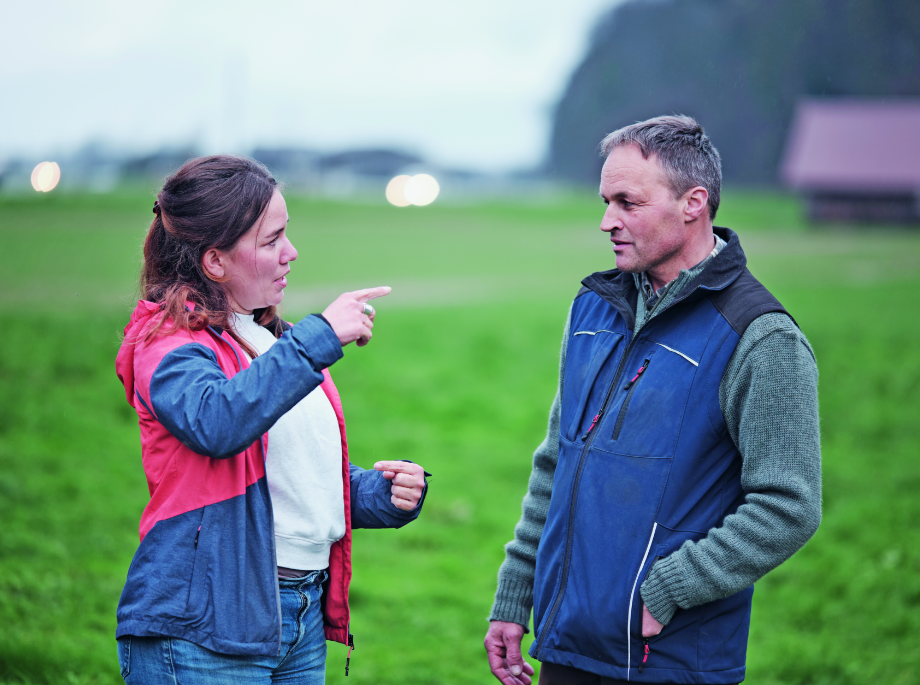
Avalanches and mudslides are just as much a part of the Alps as high fog is part of the Swiss Plateau. But now these things are becoming more and more frequent, observes Stefan Schweizer. The 59-year-old tells of a whole series of special weather events that have hit the region over the past two decades. In 2003, around 375 tons of rock buried the Chüebalm Tunnel near Iseltwald. In 2005, there was major flooding, which was followed by further floods in 2008, 2009 and 2011. “We’re used to snow avalanches here,” says Schweizer. But the fact that enormous masses of water increasingly gather and thunder down into the valley, flooding pastures and submerging cellars is new. Schweizer: “That’s what’s worrying us.”
Extreme weather calls for adaptation
As a forestry engineer, Stefan Schweizer has close ties to nature and links the frequent occurrence of extreme weather events to climate change. “Of course, we can hardly influence anything here. With 48,000 people, there are only slightly more people living in the entire area than in the town of Thun, which is half a percent of the Swiss population.” And yet, says Schweizer, the Bernese Oberland can and must set a good example. As a tourist region, the only way to be credible is to help prevent the permafrost from being pushed back higher and higher, thus increasing the risk of rockfalls and mudslides. Schweizer, from Wilderswil, is a key person in this regard. For over 15 years, he has served as Managing Director of the East Oberland Regional Conference, the body in which the 28 municipalities coordinate issues such as general planning and regional development. After all, it was Schweizer who first presented the issue of climate change to the mayors in the region. Discussions and concepts followed – until, in 2019, the Regional Conference agreed on the strategic development goal “CO2-neutral tourism region East Oberland”. To this end, it entered into a partnership with the Cantonal Office for the Environment and Energy, the Center for Development and Environment at the University of Bern (CDE) and the Wyss Academy (see box).
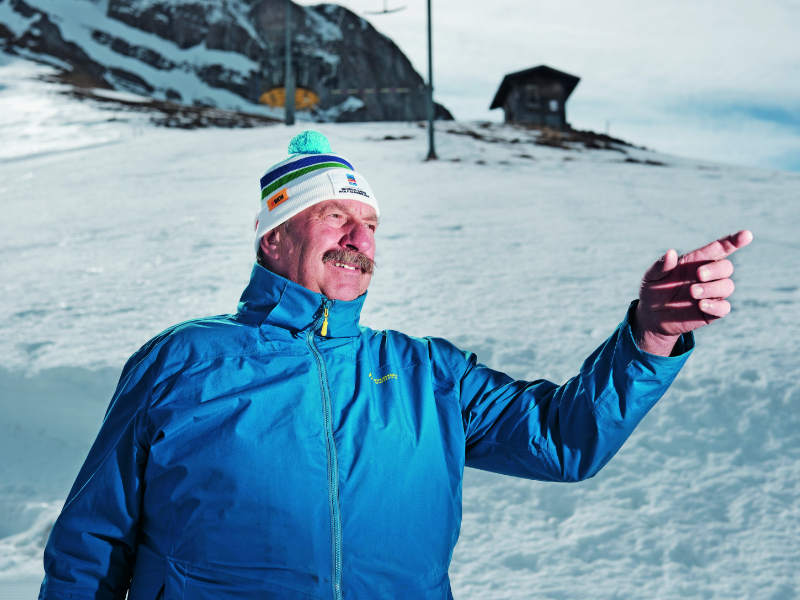
Step by step towards climate neutrality
But how does a region become climate neutral? How are the dozens of tourist groups from Asia who admire the Jungfrau region week after week to get to the Bernese Oberland without damaging the climate? Part of the solution is to adapt the framework conditions to the possibilities. “In a first step, the strategic development goal is limited to developing climate neutrality for those emissions that are included in Scope 1,” explains Thomas Rosenberg, project manager at the Office for the Environment and Energy. Scope 1 refers to the direct emissions that are released within the system boundaries. For the Bernese Oberland, this applies in particular to mobility, agriculture and buildings. These include fuel for buses, private cars and tractors, hot water for guests’ shower water, and methane emitted by the region’s 14,000 cattle, 4,700 sheep and 2,400 goats during digestion. However, emissions attributable, for example, to food and services purchased externally (Scope 2), are not taken into account. There is certainly no focus on the climate impact of long-distance flights, which take tourists and therefore money to the Oberland as feeder routes (Scope 3). In addition to focusing on Scope 1, expanding the target group helps: What in 2019 was called the “CO2-neutral tourism region” goal, was renamed the “Climate-neutral region of East Oberland” in 2023 when the development strategy was adopted by a large majority at the Regional Assembly. This makes it clear that all industries have an obligation to reduce their impact on the climate.
Subscribe to the uniAKTUELL newsletter

Discover stories about the research at the University of Bern and the people behind it.
Biogas from slurry for clean bed linen
But Scope 1 alone is challenging, says Rosenberg, and tells of a project that is unique in Switzerland and is currently being investigated with a feasibility study in the East Oberland region. It is precisely the cattle and their digestion that are supposed to mutate from being a burden on the climate to becoming innovation drivers by converting their manure into biogas on the farm. Instead of using the biogas on the spot for cooking and heating, it is to be collected. “If we process the gas and feed it into Interlaken’s gas grid, we can replace fossil natural gas there,” says Rosenberg, describing the ambitious plan. There are plenty of customers for this high-quality energy source, such as the large company Wäsche-Perle, which prepares the linen and tablecloths of countless hotels and restaurants for the next rush of guests.
Drinking water supplies ski lift power
However, it may take another 15 to 20 years before dirty washing is made clean again with fermentation gas from the cow shed. Ruedi Rubi, Chairman of the Board of Directors of the Axalp skiing area on the southern side of Lake Brienz, is already further on in his plans. Rubi started producing electricity for the chairlift, the three ski lifts and the snow cannons himself years ago, aiming for a third of the total demand. “My dream is to have a snow groomer that works electrically instead of on diesel,” says Rubi. However, it is not yet clear how such a vehicle, which costs three to four million Swiss francs, is to be financed.
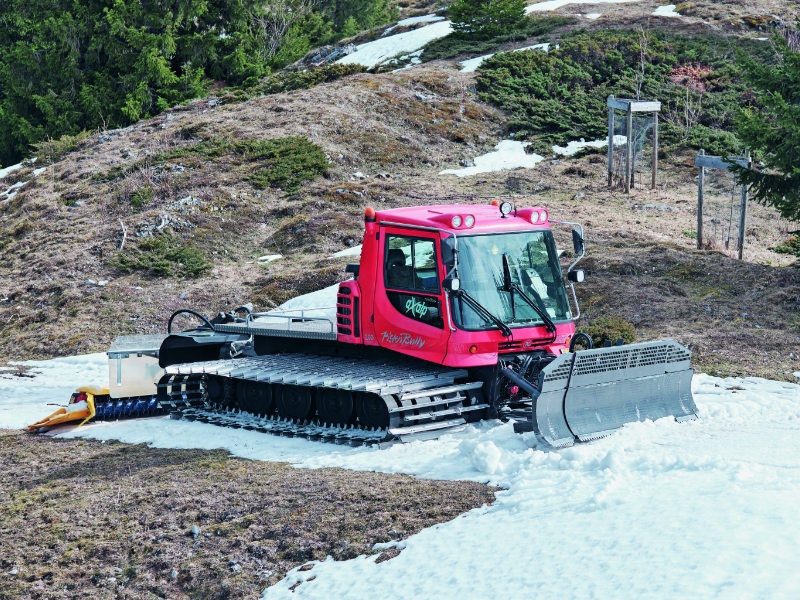
Shortly before the end of the season, only one vertical wind turbine rotates at the Windegg summit station, generating around one per cent of the electricity consumed at the Axalp. Other projects are planned, for which Rubi is eagerly looking for potential sponsors. In two years’ time, for example, a photovoltaic system with an output of 47.8 kilowatt peak will be installed on the 222 square meter roof of the company building, which will generate 38,000 kilowatt hours a year – that’s ten per cent of Axalp’s electricity consumption. With 110,000 kilowatt hours, turbines in the drinking water pipeline, which runs from 2,800 meters above sea level to the Axalp at 1,500 meters above sea level, would be even more productive. Rubi: “Instead of cushioning the difference in altitude with pressure breakers, as is the case today, you could generate an enormous amount of electricity from the energy.” Unfortunately, there is currently no money for the investment.
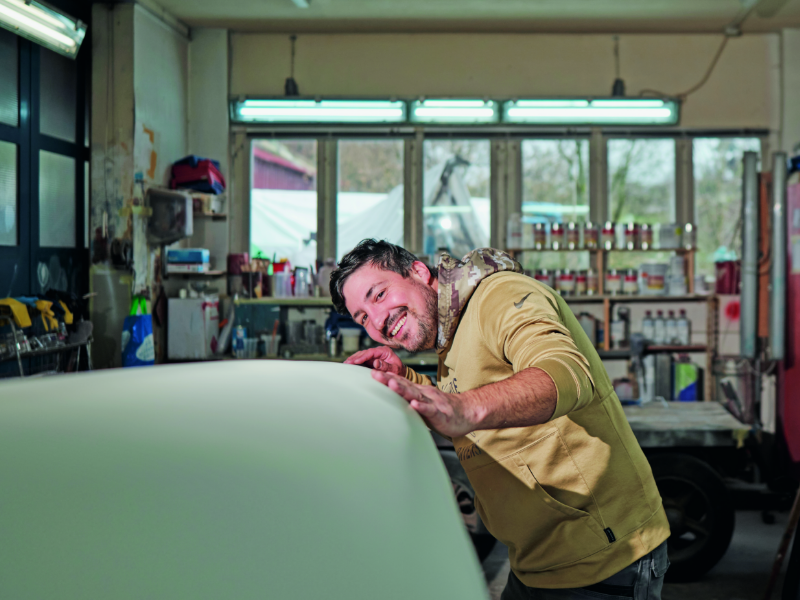
A catamaran without diesel
Skiing is seasonal. Winter sports on the Axalp are suspended after Easter. Rubi therefore wants to set up a summer operation, operate the Axalp-Windegg chairlift all year round and expand the hiking trails to the Windegg. Wind, sun and water convert the forces of nature into electricity all year round. Rubi has therefore raised CHF 185,000 in financial aid to build an electrically powered catamaran, 9 meters long and 2.6 meters wide, with the apt name E-Lisabetha. During our visit to Abegglen Werft AG in Iseltwald, we inspected the individual parts of the electric vehicle. “We’ve already equipped sailboats and motorboats with an electric motor, but it’s the first time we’ve done anything this size,” says Remo Abegglen. In the factory hall that smells of solvents, the junior boss explains how the two imposing hulls, the deck and the boat roof equipped with solar cells are made by hand from epoxy resin, polyester elements and other materials using complex processes. The plan is that from this summer onwards, a dozen tourists will glide silently over Lake Brienz every hour and experience the beauty of the landscape. Incidentally, the ferry company provides three part-time jobs at the time of year when the ski lifts don’t run. Axalp all-rounder Ruedi Rubi: “This finally allows us to offer year-round jobs, which is an important social step forward.”
“Pioneers such as the Axalp, PostBus and organic farmer Fuchs inspire others, and that can have a positive effect.”
Alina von Allmen, climate coach
Electric buses: Yellow becomes green
The electric drive is also becoming more popular on the road. PostBus Ltd, which thanks to tourism is able to maintain a tight timetable in the region that also benefits the locals, has been testing new drives since 2012, explains Ruedi Simmler, head of the Bernese Oberland operating zone. Back then, there were four hybrid buses, with the first battery-powered buses appearing five years later. From fall 2024, the new depot in Wilderswil near Interlaken will be built with charging devices to enable an almost complete switchover to electric vehicles. The bus stop areas of the two local centers, Interlaken and Spiez, are also being retrofitted with pantographs, which enable fast charging of electric buses waiting for rail connections. And the waste heat from the rectifier station in the Wilderswil depot also serves as a heat source for the building.

A climate coach reaches out to the people
The Regional Conference can initiate development goals, establish networks and launch ideas. However, managing director Stefan Schweizer points out that the conference has hardly any financial resources. In order to reach out to other people, initiate projects and draw attention to existing funding sources, you therefore need someone to act as a catalyst. Together with the Wyss Academy for Nature and the Cantonal Office for the Environment and Energy, the Regional Conference therefore funds the position of Alina von Allmen, who acts as a climate coach to further spin ideas, motivate interested parties and match underfunded projects with possible sources of finance.
“When I started working just over a year ago, we thought I could just wait in the office for inquiries,” says von Allmen. However, she quickly realized that she herself had to raise the issue of climate issues in such a way that it appealed to the target group. For example, she has set up a working group in which the seven regional mountain railways look for ways to reduce the impact on the climate by exchanging experiences. And she invited a farmer who had had good experiences with biogas to an information evening for farmers. An aperitif after such events offers the opportunity to make personal contacts. Bernhard Fuchs promptly approached the climate coach and wanted to know how he could have his farm audited for its impact on the climate. The Brienz organic farmer, who is on the board of the Cantonal Farmers’ Association and runs a pig fattening business alongside 23 dairy cows, does not want a revolution. “You can’t produce food without having a negative impact on the climate,” he says during a visit to his farm. But he and his colleagues have also noted with concern the warmer winters, which are causing populations of pests such as mice and grubs to explode. Fuchs: “We used to have much more snow down here in the shade for much longer, but now, before Easter, the grass is growing again.”
Same language, far away destination
Thanks to von Allmen, he met a colleague with whom he could talk about the fight against annoying bindweed in the pastures. Von Allmen is a native of the Zürcher Oberland (Zurich highlands) and grew up in Germany. But she has a degree in agronomy and, most importantly, she has perfected her broad Bernese dialect in the nine years she has lived in the Bernese Oberland. The dialect and her regional surname make contact with the population much easier.
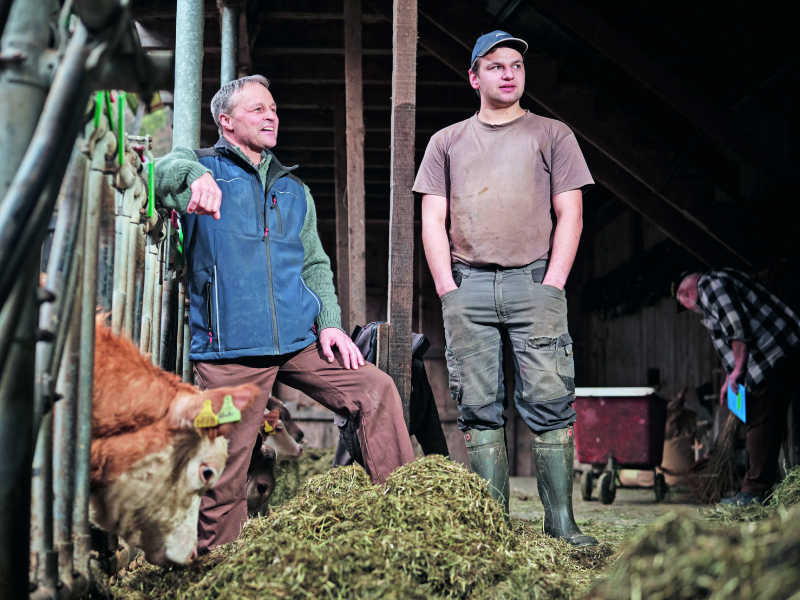
Von Allmen helped Bernhard Fuchs finance the climate analysis. One day after our visit, an environmental consultant came to the farm in Brienz, collected the data and examined ways to improve climate protection. As an organic farmer, Fuchs is already very concerned about environmental issues. And he could be a role model: A neighbor, who happened to pass by the farmyard, was interested in the details. Perhaps the next pioneer in the making?
The increasing frequency of extreme weather shows that time is of the essence. The East Oberland region is therefore pursuing the goal of 2040 for Scope 1 emissions to be climate-neutral. On the other hand, we must not put too much pressure on ourselves and the population. Alina von Allmen also knows: There is still little visible implementation. But the climate coach is optimistic: “Pioneers such as the Axalp, PostBus and organic farmer Fuchs inspire others, and that can have a positive effect.” For the journey home, she gets into her old Lada today. But it’s an exception, von Allmen stresses: Whenever possible, she makes her way to her farm in Lauterbrunnen, 200 meters above Interlaken, by e-bike.
Research for practice
Vision developed
Over a four-year process, the Centre for Development and Environment at the University of Bern (CDE) worked with around 40 stakeholders from the region to develop a joint vision and initial implementation ideas for a climate-neutral East Oberland. The process was supported by the Wyss Academy for Nature, the Office for the Environment and Energy of the Canton of Bern and the Swiss Federal Office of Energy. The final report of this first phase identifies a large number of instruments and experiments that can lead to success, including those mentioned in the main text. “The creation of the Climate Coach role is an important achievement from the first phase of the project to promote and establish implementations and experiments in the future,” says Stephanie Moser from the CDE. In addition to actively moderating the stakeholder dialog, the research team monitored the process scientifically and identified factors that influence the transformation to a climate-neutral society. The findings should help to apply what has been learned in other regions too.
Further information:
Climate town of Thun
Projects launched
Together with the Wyss Academy, Thun wants to advance climate protection with two types of project: In the climate idea, the population selected four projects from 30 proposals that are now being supported: sustainability workshops for kids, a marketing campaign for the loan bar, a food-save banquet and a boost for public gardens in remaining areas. In the real-world laboratory, a jury of experts enabled two projects to be further developed. A pilot project that promotes circular building finally prevailed.
Information at:
Kontakt
Alina von Allmen
Magazine uniFOKUS
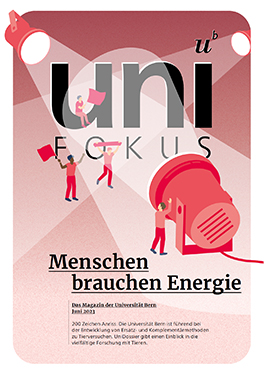
People need energy
This article first appeared in uniFOKUS, the University of Bern print magazine. Four times a year, uniFOKUS focuses on one specialist area from different points of view. Current focus topic: Energy
Subscribe to uniFOKUS magazine